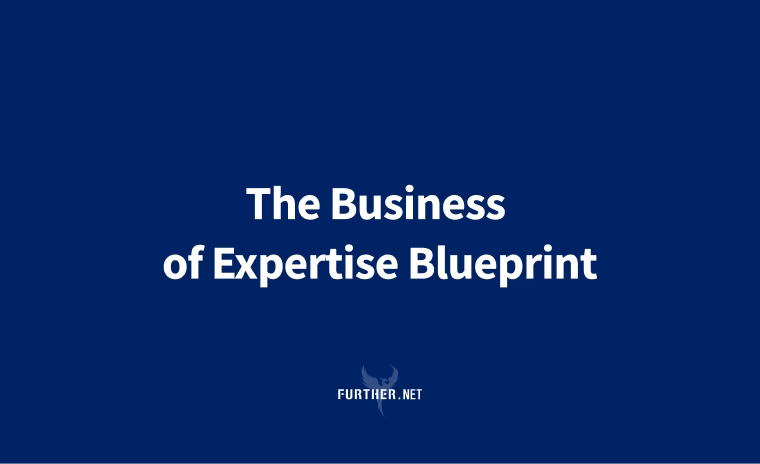How to Best Leverage Substack for Your Expertise-Based Business
Substack solves the major problem that digital entrepreneurs and other expertise-based businesses face.
You can’t escape hearing about Substack these days.
And with good reason. It wasn’t a coincidence that when I shifted Further from a personal project to a business at the beginning of 2025, one of the first moves I made was to shift to Substack.
Those who have followed me for a long time were surprised. I was a dedicated “never build on rented land” type, and even openly ridiculed Substack’s revenue model when it first launched in 2017.
But in 2023, I launched a temporary project that caused me to reconsider my stance. Simply by executing the very audience-first fundamentals that I’ve been sharing with you, I quickly became a Substack Bestseller despite not having a clue about how the platform truly works.
At that point, I began to analyse and deconstruct every element of Substack to better understand it. What I discovered was highly encouraging, and that’s when I decided that it would be the new home of Further as it transformed into a commercial pursuit.
In short, Substack solves the major problem that digital entrepreneurs and other expertise-based businesses face: how to get traffic that leads to email subscribers.
The Digital Traffic Problem
When I tell people my first three businesses were powered by audiences accumulated through email newsletters, no one shows much surprise. The surprise comes when I tell them those businesses were started between 1998 and 2002.
Now, many people tend to think of an audience in terms of social media followers, along with “likes” and “shares.” But not all audiences are created equally, and social media is seriously outclassed by the OG audience vehicle that your business can actually own and control.
And that’s still email.
This explains why so many media and marketing people have gravitated to the Substack ecosystem, which places email right where it belongs — at the center of it all.
Back in the 90s, it didn’t take digital marketers and entrepreneurs long to learn that you shouldn’t try to sell people something as soon as they arrive at your website. You first get them on an email list, and then you have multiple opportunities to make a paid offer.
Once search engines became the starting point for “web sessions,” pay-per-click (PPC) programs emerged for paid placement in search results. In 1998, GoTo (later rebranded as Overture and then acquired by Yahoo) was the pioneer in this space two years before Google Adwords came along.
Back then, PPC was simple and powerful. At the start of my virtual real estate business, I knew I could spend $1,000 and generate $10,000 in resulting revenue, which led to a six-figure business in six months.
Meanwhile, I was creating search engine–optimized content to drive defensible organic traffic that would start arriving after that initial six months. Eventually, I was able to stop PPC advertising, because free Google traffic would keep my email sequence filled with fresh prospects each and every month.
Fast forward to 2005, and Web 2.0 emerged. The “social web” was an even greater goldmine for traffic, as bloggers freely linked to each other while early social news platforms such as Digg and Delicious Popular sent content creators often more traffic than their servers could handle.
Then came Facebook and Twitter, and the traffic bonanza accelerated. Publishing content on a regular basis became the ideal digital business strategy, as articles often went viral on social media simply by posting them.
2010 was the beginning of the end of the party. That’s when the Zuckerberg bait-and-switch was completed, with Facebook charging businesses to reach the audiences they had built on the platform.
Nowadays, it’s no secret that social media algorithms intentionally suppress posts with outbound links to keep people on the platform, thereby increasing advertising revenue. Meanwhile, extensive search engine optimization efforts over the last two decades now make it incredibly difficult for new and smaller publishers to rank well in the few remaining spots not populated with paid listings.
And looking ahead, artificial intelligence is already changing the way we seek information, which threatens Google’s lucrative business model and further diminishes a potent source of traffic. Everyone talks about optimizing content for AI without ever answering the obvious question:
How does this lead to new email subscribers?
In summary, the two channels we’ve relied on for traffic and email subscribers — social media and search engines — have become increasingly difficult to leverage. For many, they border on useless. And AI steals the essence of our content without sending us traffic.
Make no mistake, email marketing still works. But if you can’t get people to even see and consider your opt-in offer, you’re stuck.
Enter Substack, an entire ecosystem centered around getting people to sign up for content delivered by email. While search engines and traditional social platforms stifle the lifeblood of our expertise-based businesses, Substack optimizes for it.
The Power of the Substack Ecosystem
While positioned as a platform for free and paid email newsletters, in actuality, Substack is an easy-to-use blogging software with:


